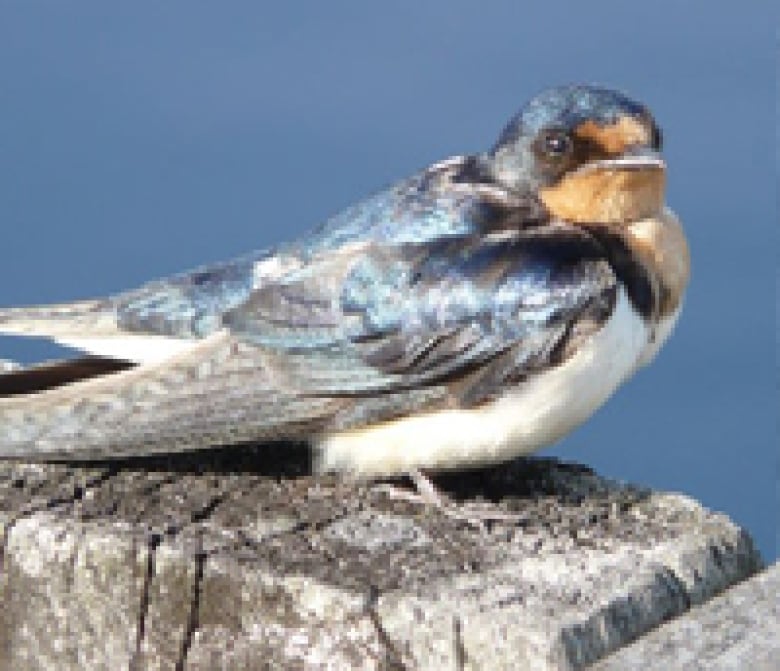9 cool facts about barn swallows
'They will swoop and dive-bomb you or start making alarm calls if you’re deemed a threat'

Barn swallows are the most widespread of all swallow species — they're found on every continent except Antarctica — but the tiny songbirds are actually threatened in Canada.
- Barn swallow, bobolink project response unexpected, says Island Nature Trust
- Barn swallow, bobolinks conservation project sees success
The population in Canada has decreased by an estimated 76 per cent over the past 40 years. No one really knows why the population has declined so dramatically, but researchers attribute it to climate change, predators, lost nesting and foraging habitat and changes in insect populations.
The Island Nature Trust has been co-ordinating programs ensure Islanders know about the birds and do their best to protect them over the past few years — encouraging them to build nesting ledges and leaving barn doors open for swallows to nest.
Leanne Tol coordinates the Island Nature Trust's Farmland Birds Project, and she shared some fascinating facts about barn swallows for the first in our summer series about P.E.I. wildlife.
1. Long way home
Barn swallows are long-distant migrants who spend their winter in parts of Central and South America, and have been found as far south as Argentina — 9,000 kilometres away!

2. They're lightweights
An adult barn swallow weighs on average 17 to 20 grams — the same as just 7 or 8 pennies (remember those?).
3. They recycle
Barn swallows build their nests with mud pellets and like to reuse nests year after year. Nest building takes up a lot of energy and swallows can make more than 1,000 trips in the process. New pairs will take over unused nest.
"It is thus important to not remove old nests, even if they've been empty for a while because you never know when a new pair will come to investigate!" said Tol.

4. Eat and run
Barn swallows are aerial insectivores — they catch and eat insects in the air as they fly. 99.8 per cent of their diet during the breeding season is flying insects. They will spend all day going back and forth, feeding their young.
5. Double down
The birds frequently produce two broods of four or five eggs in a year, and 70 to 90 per cent will successfully raise at least one young. The second family or "clutch" of eggs is usually smaller, Tol said.
"We are hoping that with this project we can get a better handle on the number of chicks that fledge for nests here on the Island," said Tol.
"If the chicks make it to 10 days, it is generally accepted that they will be successful."
6. No place like home
Young will leave the nest between 19 and 24 days after hatching. But they'll continue to hang around for at least a week, being fed by the parents and staying in the nest at night.
"Moving out is always difficult!" jokes Tol.
However, once they leave, young are not likely to return to the site where they were raised.

7. Dive-bombers
"Barn swallows can act territorial around their nests, and they will swoop and dive-bomb you or start making alarm calls if you're deemed a threat," said Tol. They'll target your cats and dogs too!
"From my experience it does seem like they get used to the farmers that are in and out of the buildings, and don't mind some human activity once they get used to you," she added.
8. Four years old
Barn swallows live on average four years, beginning breeding at one year old. The oldest recorded barn swallow in North America was eight years old, recaptured in Maryland in the US, and its age was likely discernable because it was banded, said Tol.
9. Help from dad
Males will share the nesting building and feeding responsibilities, said Tol. Incubation is mostly done by the female, but the male does sometimes sit on the nest too.

Not sure what a barn swallow looks like? They have dark blue backs, reddish faces, deeply forked tails and those aforementioned aerial acrobatic skills.
Even with all this information, there are still plenty of holes in the information about P.E.I. barn swallows researchers would love to know.
To give them a hand reporting sightings and nests, contact Island Nature Trust at [email protected].